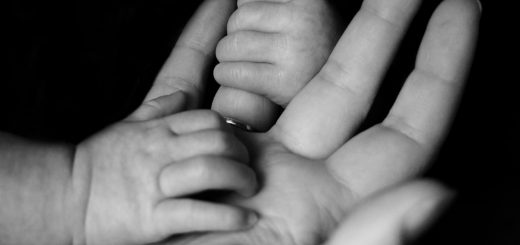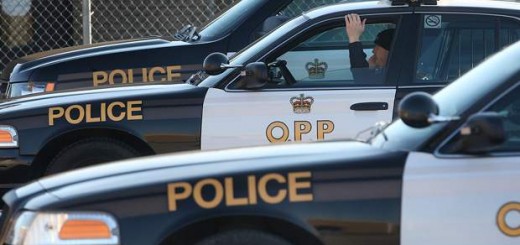Defining the Homeless’s Shelter Rights in Public Spaces: Abbotsford v Shantz
The Supreme Court of British Columbia (“BCSC”) recently released the long-awaited ruling in Abbotsford v Shantz, 2015 BCSC 1909 [Abbotsford]. Abbotsford heard both the action by the City of Abbotsford (“the City”) and the action by BC/Yukon Association of Drug War Survivors (“DWS”). The City sought a permanent injunction against the erection of shelters in Jubilee Park and damages against Mr. Shantz, the Director of DWS. DWS brought an action challenging the constitutional validity of various bylaws that had been used to target the City’s homeless population. Abbotsford precludes municipalities from prohibiting the homeless population from erecting temporary shelters at night in public spaces. While the decision was a huge win for poverty lawyers and Abbotsford’s homeless, Chief Justice Hinkson’s unwillingness to expand s. 7 of the Charter to include positive rights and a new constitutional principle was a setback for housing advocates.
Facts
On June 4, 2013, the City evicted homeless persons from the Happy Tree Camp by spreading chicken manure on the campsite. In October 2013, Barry Shantz and other homeless persons, set up tents in Jubliee Park, and eventually relocated to the wooden structure in the Park’s parking lot. On December 13th of that year, Justice Blok of the BCSC ordered the wooden structure be vacated. The result was that these homeless persons migrated to the Gladys Avenue Camp. The City engaged in many displacement tactics at Jubliee park: issuing Eviction Notices, ordering the City’s homelessness to disperse, using bear spray, and destroying tents (Abbotsford, para 91).
Impugned Bylaws
Consolidated Parks Bylaw, 1996, No. 160-95 [Parks Bylaw].
DWS challenged the constitutional validity of ss. 10, 13, 14, and 17, as well as the definition of “park” in s. 2 of the Parks Bylaw. Sections 14 and 17 prohibited sleeping or being present in any park overnight and erecting any form of shelter without a permit. Sections 10 and 13 prohibited gathering and meeting in any park or obstructing any other person from the free use and enjoyment of any park. Section 2 defined park as “all public spaces under the jurisdiction of the City” (Abbotsford, para 24).
Consolidated Street and Traffic Bylaw, 2006, Bylaw No. 1536-2006 [Street and Traffic Bylaw].
DWS challenged the constitutional validity of subsections 2.1(d), (h), and (j). These subsections prohibited creating an obstruction to the flow of vehicles and placing any chattel, ware, or object on a Highway.
Good Neighbour Bylaw, 2003, Bylaw No. 1256-2003 [Good Neighbour Bylaw].
DWS challenged the constitutional validity of subsections 2.7(d) and (e), which prohibited erecting any form of shelter in public spaces and sleeping in a vehicle on a highway or other public space. DWS also challenged the definition of “Highway or Other Public Place,” which included “any place to which the public has or is permitted to have access or is invited” (Abbotsford, para 24).
Issues
The two actions raised six issues combined. The first issue raised by the City was whether the interlocutory injunction regarding Jubilee Park should be made permanent. Second, whether the City is entitled to recover damages from Mr. Shantz.
The first issue raised by DWS was whether the right to obtain the basic necessities of life is a foundational principle of fundamental justice. Second, whether s. 7 guarantees “the right to erect temporary, non-obstructing, shelter during the day as well as at night, on City park lands and public spaces” (Abbotsford, para 4). Third, whether the impugned bylaws infringe on ss. 2(b), 2(c), 2(d), 7, and 15 of the Charter. Lastly, whether specific actions of City employees and others breached the Charter.
BCSC’s Response to Issues Raised by the City
Chief Justice Hinkson quickly dismissed the City’s action, declining to grant a permanent injunction preventing homeless persons from setting up temporary shelter in Jubilee Park. Further, the Court dismissed the claim for damages against Mr. Shantz.
Section 2 of the Charter
The BCSC found that the City Bylaws and actions in question did not infringe on any part of s.2 of the Charter. Despite laying out the various tests and reviewing the leading cases for subsections 2(b), (c), and (d), Chief Justice Hinkson provided minimal analysis of how the law applied to the facts. In determining whether the City breached s. 2(b), Chief Justice Hinkson considered the “historical or actual function of the place” (Montréal (City) v 2952-1366 Québec Inc, [2005] 3 SCR 141, para 74). Since public parks and highways have not historically been used for people to pursue the necessities of life or reside, section 2(b) was not infringed.
Section 2(c) was not infringed. The homeless peoples’ right to enjoy public spaces was not infringed as they were attempting to use a space for a purpose for which it was not intended (Abbotsford, para 162).
Section 2(d) was not infringed since the City’s homeless “had not been prevented from joining with those with whom they choose to associate” (Abbotsford, para 168).
Section 7 of the Charter
All in all, DWS had a limited victory. The BCSC found that ss. 14 and 15 of the Parks Bylaws and subsection 2.7(d) of the Good Neighbour Bylaw did infringe the liberty and security of the person in a manner that was both overbroad and grossly disproportional. This infringement could not be saved by s. 1.
Chief Justice Hinkson maintained that life was not engaged by the impugned Bylaws. In doing so, he rejected the possibility that s. 7 could contain positive rights. Chief Justice Hinkson’s reasons were somewhat dissatisfying. After reviewing relevant jurisprudence, he correctly determined that, “[t]here has been no recognition by courts in Canada that the Charter creates positive obligations in relation to social and economic interests” (Abbotsford, para 177). A richer analysis would include why s. 7 does not create positive obligations on governments, rather than observing that no court has previously recognized positive rights.
Is the Right to Obtain the Necessities of Life a Foundational Constitutional Principle?
DWS submitted that the right to obtain the necessities of life is a foundational constitutional principle. This principle includes the right to: (a) warmth and adequate protection from the elements; (b) rest and sleep; (c) community and family connection; (d) effective access to safe living spaces; and (e) freedom from physical, mental and psychological health risks and effects of exposure to the elements, sleep deprivation, chronic threatened or actual displacement and the isolation and vulnerability related to such displacement.
Chief Justice Hinkson rejected DWS’s assertion that the right to obtain the necessities of life is a constitutional principle. In Canadian Foundation for Children, Youth and the Law v Canada (AG), [2004] 1 SCR 76 [Canadian Foundation] the Supreme Court established a three-part test to determine whether a principle is foundational to the constitution (Canadian Foundation, para 8). The first stage requires that the principle is a legal principle. Second, there must be a consensus that the principle is fundamental to the way in which the legal system ought to fairly operate. Third, the principle must be identified with sufficient precision to yield a manageable standard against which to measure deprivations of life, liberty, or security of the person. Chief Justice Hinkson held that the right to obtain the necessities of life was not a legal principle in the “inherent domain of the judiciary,” as it fell into the realm of public policy (Abbotsford, para 172).
Section 15 of the Charter
Chief Justice Hinkson relied heavily on the recent decision in Tanudjaja v Canada (Attorney General), 2013 ONSC 5410 [Tanudjaja ONSC]. In Tanudjaja ONSC, Justice Lederer held that “being without adequate housing is not a personal characteristic…or a fact that can be determined on objective criteria,” going on to say that homelessness is not an analogous ground for the purpose of s. 15 (para 130). Unfortunately, Chief Justice Hinkson’s analysis ignored the later Ontario Court of Appeal’s Tanudjaja decision (Tanudjaja v Canada (Attorney General), 2014 ONCA 852 [Tanudjaja ONCA]). In Tanudjaja ONCA, the Court held that it was not necessary to consider whether homelessness was an analogous ground (para 37-38).
Chief Justice Hinkson used applyied formal equality, rather than the substantive equality rights that exist under s.15. Chief Justice Hinkson held that, “[w]hile the effect of the Impugned Bylaws may have a greater impact on those who are homeless, that is not because they are being treated any differently than those who are not homeless, disabled or due to their racial backgrounds” (Abbotsford, para 236). In Withler v Canada (Attorney General), [2011] 1 SCR 396 [Withler], the Supreme Court of Canada held that “s. 15(1) jurisprudence has consistently affirmed that the s. 15(1) inquiry must focus on substantive equality…[with a] corresponding repudiation of a formalistic “treat likes alike” approach” (Withler, para 43). Should this case go to the Court of Appeal of British Columbia, the higher court will likely be tasked with revisiting these faulty reasons.
Conclusion
Abbotsford is a bittersweet victory for anti-poverty advocates. While ss. 14 and 15 of the Parks Bylaws and subsection 2.7(d) of the Good Neighbour Bylaw have been rendered void, the rejection of positive rights for the homeless under s. 7, likely the central goal of this test case, left much work to be done on the issue. With the recent and significant loss in Tanudjaja ONCA, it is unlikely that this decision would be overturned should it be considered on appeal.







Join the conversation